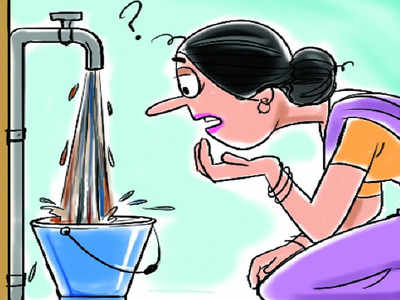The Indian Express 26.06.2013
Panel proposes 45 new tubewells to make up for water shortage in city

There
are 38 shallow tubewells already installed in greenbelts which have
been provided with tertiary treated water for irrigation.
With 9 million gallons daily (MGD) of water from what is supplied to
Chandigarh set to be diverted to Panchkula and Chandimandir in the
coming months, the Municipal Corporation is looking for alternatives to
cater to the city’s needs. It has been proposed that 45 additional
tubewells be installed at different locations in Chandigarh. The shallow
water is also being tested to ascertain whether it is fit for
consumption.
In the absence of a pipeline to Haryana, Chandigarh has been
using the share of water that is to be diverted to the neighbouring
state. With the work for laying of the pipeline to be completed soon,
Haryana’s share of water would have to be released. Of the 9 MGD water,
Panchkula’s share would be 6 MGD while Chandimandir would get 3 MGD.
Chandigarh which is at present utilising 67 MGD of canal water would be
left with 58 MGD. In addition, the city also receives 20 MGD water from
tubewells at present.
In order to find ways to tide over the shortfall of 9 MGD water, a
committee of three executive engineers was constituted. The committee
in its report has suggested that 45 new tubewells need to be installed.
These 45 tubewells are expected to compensate for the 9 MGD water that
Chandigarh will have to give to Panchkula and Chandimandir. Sites for 34
tubewells have been identified at places where no permission would be
required from the office of Chief Architect. Officials claim that
getting permission from the Chief Architect is a long-drawn process and
by identifying such sites this could be avoided.
Of the 34 sites, 13 each have been identified in MC public health
division 1 and III while eight sites have been identified in division
II. In addition to these, it is proposed that 16 tubewells be installed
in green belts which are with the civic body without construction of a
permanent structure. The panel for running the tubewell could be housed
in a temporary shed. At present, there are 220 tubewells in the city,
out of which 170-180 remain functional. As many as 10 per cent of
tubewells become defunct every year.
There are 38 shallow tubewells already installed in greenbelts which
have been provided with tertiary treated water for irrigation. The water
samples of these tubewells have been tested and the results are
awaited. In case the samples are found to be fit for drinking, the water
from these tubewells would be utilised for drinking. Pipelines would
then be laid here.
The peak summer demand for water in Chandigarh is around 113 MGD.
While there is already a shortfall of water, after water is diverted,
it could create problems. The project for augmentation of water supply
in the city is stuck due to the tussle between Punjab and Haryana over
water sharing. The issue is pending in the Punjab and Haryana High
Court. While the proposal had been approved by the Centre and funds were
sanctioned under the Jawaharlal Nehru National Urban Renewal Mission,
the project stands shelved due to the tussle. Chandigarh has no other
source of generating water apart from the tubewells.
The southern sectors of the city are not very conducive for
installation of tubewells and more of these get defunct in these
sectors. The quality of the soil and level of groundwater are not
conducive for tubewells in the southern sectors. Another proposal mooted
by the committee is that the machinery installed on existing tubewells
where spring level has gone down be upgraded.

